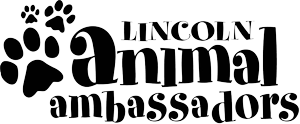Reprinted with permission from Tipper and Squirt Care For Cushing’s Fund Inc, a 501c.3 Nonprofit Charity, Copyright 2015.
He’s not only your buddy, your best friend, he is a member of your family… and you are worried about him. Last night, like every Monday night during football season, you took the Coke, popcorn, and Milk-Bones to the couch, calling out to your buddy to join you as usual. But for the first time since he was very young, eight-year-old Rover could not jump on the couch without help. His back legs acted as if they could no longer propel his weight up and forward to his customary seat beside you. As you lift your buddy up to the couch, you recall other changes in Rover over the last few months.
He seems to be hot all the time, lying on the floor vents and in front of the fan on the linoleum. He pants, heavily at times and often, as if he’s been running but Rover hasn’t wanted to run and play much at all lately, tiring after a short walk some days. Even though the temperatures are falling and he should be putting on his winter coat, Rover is shedding as if it were spring. He constantly begs for food and every time you turn around the water bowl is empty again – Rover has even had a few accidents recently, to his utter humiliation. To top it all off, Rover has developed a rather large pot belly yet the bones in his face are showing more. You decide to call his vet and make an appointment.
Two months and $2000 later, the vet tells you Rover has hyperadrenocorticism. The vet further tells you it will cost a minimum of $200 a month for the medicine to treat plus regular testing to monitor the medication. The monitoring tests would need to be performed an average of four times a year at $267 a pop but might be needed as often as eight times a year or more. The vet then gives you the bad news – in spite of the best efforts on their part and yours, Rover may well develop one of several serious complications which would shorten your best friend’s life dramatically.
Welcome to the devastating, life-altering world of canine Cushing’s.

Canine Cushing’s disease (hyperadrenocorticism) is a condition that results from the chronic overproduction of too much cortisol, a glucocorticoid, in the body. In the normal dog, the pituitary gland produces a hormone called ACTH (adrenocorticotropic hormone), which stimulates the adrenal gland to produce the glucocorticoid hormones necessary for the function of many systems in the body. If something goes wrong in the
pituitary gland or adrenal gland and too much glucocorticoid is produced, then Cushing’s disease develops, presenting with some common, varied signs. This is one of, if not the, most complex canine diseases with a wide range of symptoms.
Cushing’s disease is considered a disease of middle age and older dogs though dogs as young as two (2) have been confirmed. The usual age of contracting the disease is around six or seven years with a range of two to sixteen years. There is equal distribution between males and females and although all breeds are at risk, some breeds reported to be at greater risk include: poodle, Yorkshire terrier, beagle, Boston terrier, boxer, dachshund, German shepherd dog, golden retriever, Labrador retriever, Scottish terrier and terriers in general.
Canine Cushing’s can present with many different signs. It is not uncommon for the dog owner to think the dog is simply aging instead of sick. The most common signs in canine Cushing’s are:
- increased/excessive water consumption (polydipsia)
- increased/excessive urination (polyuria)
- urinary accidents in previously housetrained dogs
- increased/excessive appetite (polyphagia)
- appearance of food stealing/guarding, begging, trash dumping, etc.
- sagging, bloated, pot-bellied appearance
- weight gain or its appearance, due to fat redistribution
- loss of muscle mass, giving the appearance of weight loss
- bony, skull-like appearance of head
- exercise intolerance, lethargy, general or hind-leg weakness
- new reluctance to jump on furniture or people
- excess panting, seeking cool surfaces to rest on
- symmetrically thinning hair or baldness (alopecia) on torso
- other coat changes like dullness, dryness
- slow regrowth of hair after clipping
- thin, wrinkled, fragile, and/or darkly pigmented skin
- easily damaged/bruised skin that heals slowly
- hard, calcified lumps in the skin (calcinosis cutis)
- susceptibility to infections (especially skin and urinary)
- diabetes, pancreatitis, seizures

There are two primary distinct forms of the disease – pituitary dependent hyperadrenocorticism (PDH) and adrenal dependent hyperadrenocorticism (ADH), both caused by tumors.
PDH involves the over-secretion of ACTH by the pituitary gland. ACTH is a hormone that stimulates the adrenal gland to produce glucocorticoids. In PDH a microscopic, usually benign, tumor on the pituitary gland in the skull causes over-secretion of ACTH, ignoring the adrenal glands’ response. The majority of dogs will have PDH (80-85%).
The adrenal-based form of the disease, ADH, is the result of an adrenal tumor that causes an over-secretion of glucocorticoids. Adrenal tumors are responsible for around 15-20% of the cases of Cushing’s disease. ADH can be cured via surgery called adrenalectomy if the dog is a candidate for this highly involved operation.
A third form of Cushing’s is called Atypical in which the cortisol is normal but one or more of five intermediate hormones are elevated. This form is controversial as studies have shown most dogs with elevated cortisol also have elevated intermediate hormones. Atypical has a unique treatment that initially involves the use of supplements VS pharmaceuticals.
There is also a form of the disease called Iatrogenic Cushing’s that occurs as a result of the use of steroids. In this form of the disease, symptoms of Cushing’s disease will usually go away once the dog is weaned off of the steroids if possible.
Cushing’s disease can present with a variety of symptoms and may also be involved with several different disease processes. Therefore, it is recommended that any dog suspected of having Cushing’s disease should have a complete blood count (CBC), blood chemistry panel, and urinalysis performed as a routine part of the diagnostic process. Common abnormalities in these tests include increases in alkaline phosphatase and ALT (liver enzymes), increased cholesterol, decreased BUN, and dilute urine (low specific gravity).
There are several different tests that can be performed to get a definitive diagnosis of Cushing’s disease. Many times the veterinarian may perform more than one test to help confirm the diagnosis or to determine which form of the disease is present. A diagnosis of Cushing’s disease, however, should never be made on the basis of laboratory tests alone. The dog should be showing signs of the disease as well and have a medical history consistent with the diagnosis. Most veterinarians will not start treatment on a dog that is not showing signs.
The three most common “screening” tests are the urine cortisol: creatinine ratio (UC:CR), the low dose dexamethasone suppression test (LDDS/LDDST), and the abdominal ultrasound. Other tests often used are the ACTH and the full adrenal panel from the University of Tennessee in Knoxville. The HDDS, or high dose dexamethasone suppression test, is rarely used since other tests can now help differentiate between PDH and ADH.
Treatment consists of several different options, depending on the form of Cushing’s diagnosed and the general health of the dog. If an adrenal tumor is identified, then surgical removal may be a viable option if the dog is a candidate. Currently researchers are working on a viable surgical option for the pituitary form but little progress has been made in recent years. Both ADH and PDH can be successfully treated medically.
Non-surgical treatment is the most often used treatment for cases of canine Cushing’s disease. There are currently four different pharmaceuticals (drugs) being used to treat canine Cushing’s disease. Mitotane (Lysodren), Vetoryl (Trilostane), Anipryl (Selegiline) and Nizorol (Ketoconazole). Of these, Mitotane (Lysodren) and Vetoryl (Trilostane) have proven to be the most effective.
This information is not meant to be a substitute for veterinary care. Always follow the instructions provided by your veterinarian.
This fund is In Loving Memory of Tipper and Squirt who both suffered from Cushing’s Disease.
This fund was born out of a depth of love and grief that defies language. It is an endeavor in honor of Tipper Stalma and Squirt Richards, who suffered with Cushing’s, as well as all cush babies around the world, past, present, and future. Through this fund, Tipper and Squirt, will live on with each cush pup who is assisted.
The mission of the Tipper and Squirt Care for Cushing’s Fund, Inc. is to financially aid families who are struggling to pay their dogs’ medical costs associated with the diagnosis and treatment of this complex disease.


I have an almost seven year old shih tzu that was recently diagnosed with Cushing’s. She has been on Trilostane and initially, was getting 15mg twice a day. After the last ACTH stimulation test, her Trilostane was increased to 20 mg twice a day. She is still drinking and peeing a lot, although accidents in the house have decreased a lot. In addition, her liver enzymes (AST and ALP) are quite high, but since treatment, her total bili has returned to normal. In addition to Trilostane, she also takes liver support (Denamarin and Ursodiol) as part of her medication regimen. When can we expect to see a change in her symptoms that might indicate that she is doing better?? Also, she’s a bugger to give pills to. She spits out any pills we try to hide like with pill pockets. Any suggestions would be helpful.
LikeLike
Jo-Ann, the best site I have found for advice is K9-Cushings. I encourage you to post your question at this site. Response is usually pretty quick. If you don’t get a timely response, post again to ensure someone sees it or contact me and I’ll message the moderators. Allison
LikeLike